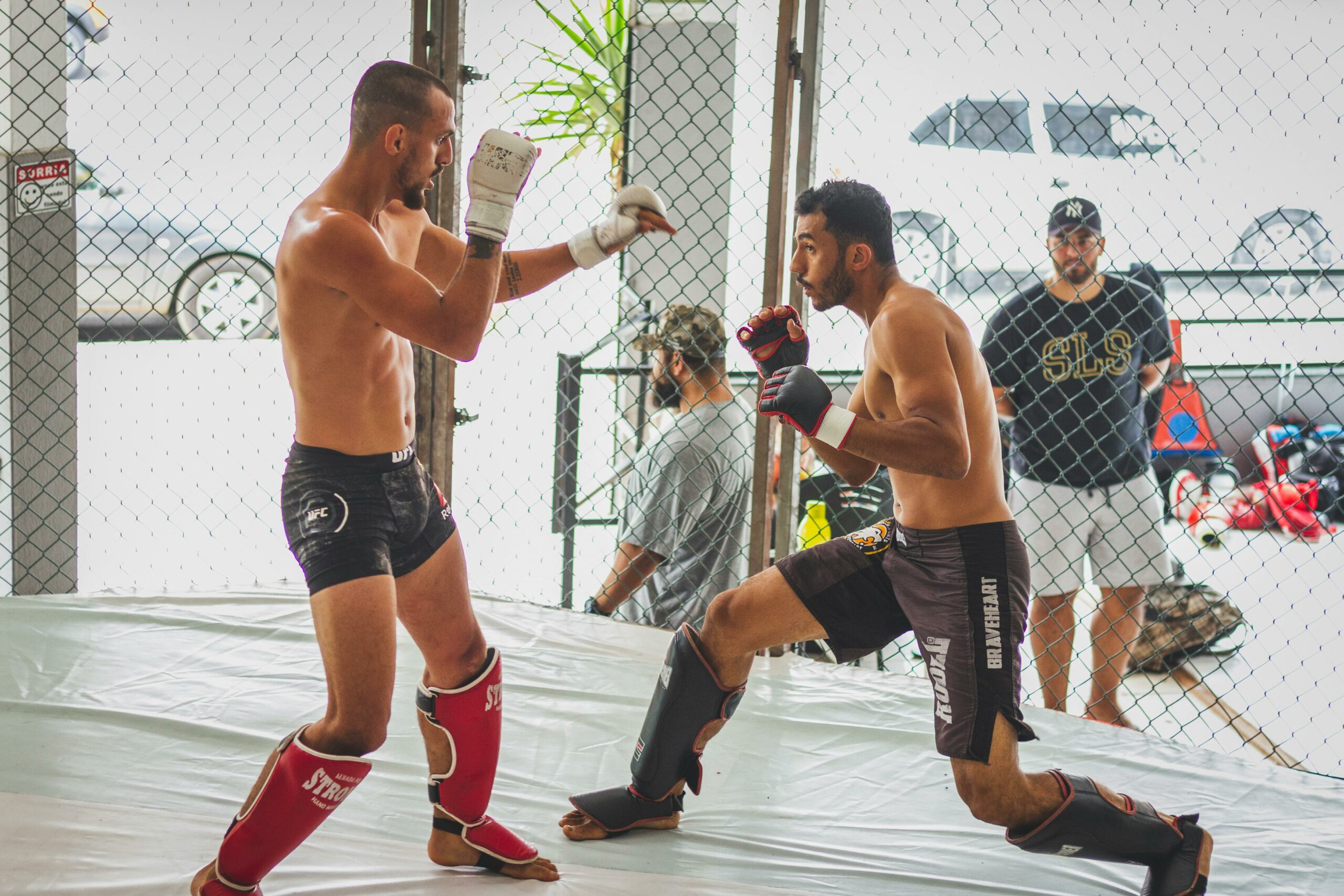Embarking on the journey of Muay Thai or kickboxing as a beginner opens the door to a world of physical fitness, mental discipline, and personal growth. This comprehensive guide will walk you through everything you need to know before stepping into the gym, ensuring a rewarding start to your martial arts journey.
Understanding Muay Thai and Kickboxing
What is Muay Thai?
Muay Thai, often referred to as the “Art of Eight Limbs,” is a traditional Thai martial art known for its use of fists, elbows, knees, and shins. Originating in Thailand centuries ago, it has evolved into a globally popular combat sport renowned for its effectiveness in both self-defense and competitive fighting.
What is Kickboxing?
Kickboxing combines elements of traditional boxing with martial arts kicks, originating primarily from Western boxing and karate. It emphasizes striking techniques using fists and feet, making it a versatile discipline for both fitness enthusiasts and competitive athletes.
Key Similarities and Differences
While Muay Thai and kickboxing share similarities in striking techniques and physical conditioning, they differ in their cultural roots, rulesets, and training methodologies. Understanding these nuances helps beginners choose the discipline that aligns best with their goals and interests.
Benefits of Muay Thai and Kickboxing
Physical Fitness Benefits
Engaging in Muay Thai or kickboxing provides a comprehensive full-body workout. It improves cardiovascular health, enhances muscular strength and endurance, and promotes flexibility through dynamic movements and drills.
Mental and Emotional Well-being
Beyond physical fitness, these martial arts disciplines foster mental resilience, discipline, and stress relief. Training sessions require focus, perseverance, and the ability to overcome challenges, which translates into improved confidence and mental clarity in daily life.
Self-Defense Skills
Learning Muay Thai or kickboxing equips individuals with essential self-defense skills. Techniques such as striking, blocking, and clinching empower practitioners to defend themselves effectively in real-world situations, boosting personal safety and confidence.
Getting Started: What to Expect in Your First Muay Thai/Kickboxing Class
Choosing a Gym
Selecting the right Muay Thai or kickboxing gym is crucial for beginners. Consider factors such as location, instructor credentials, class schedule, facilities, and the overall atmosphere to ensure a positive and supportive training environment.
Initial Assessment and Goal Setting
Before your first class, expect an initial assessment with a trainer to evaluate your fitness level, discuss goals, and address any concerns or medical considerations. Setting realistic short-term and long-term goals helps track progress and maintain motivation.
Basic Techniques and Fundamentals
Beginners will start with fundamental techniques such as stance, footwork, basic punches (jab, cross), kicks (roundhouse kick), and defensive maneuvers (blocks, parries). Coaches emphasize proper form and technique to build a strong foundation.
Equipment and Attire
Most gyms provide essential equipment such as boxing gloves, hand wraps, shin guards, and mouthguards. Wear comfortable athletic clothing that allows freedom of movement and supports intensive physical activity.
Warm-ups and Conditioning
Classes typically begin with warm-up exercises to prepare the body for training, followed by drills to improve cardiovascular fitness, endurance, and agility. Expect a combination of shadow boxing, bag work, partner drills, and circuit training to enhance overall conditioning.
Safety and Etiquette in Muay Thai/Kickboxing
Safety Protocols
Safety is paramount in Muay Thai and kickboxing. Coaches emphasize proper technique, control, and respect for training partners to minimize the risk of injury. Beginners are encouraged to communicate any discomfort or limitations to instructors.
Etiquette and Gym Culture
Respect for fellow participants, coaches, and gym rules is fundamental. Understanding gym etiquette, such as arriving on time, cleaning equipment after use, and maintaining a positive attitude, contributes to a supportive and inclusive training environment.
Progression and Continued Learning
Skill Development and Progress Tracking
As you gain experience and proficiency, expect to progress from basic techniques to more advanced combinations, clinching, and sparring drills. Coaches provide personalized feedback and guidance to help you refine skills and achieve your martial arts goals.
Setting Milestones and Achieving Goals
Set achievable milestones such as mastering specific techniques, improving endurance levels, or participating in gym-hosted sparring sessions or amateur competitions. Celebrate achievements and use setbacks as learning opportunities to fuel continuous improvement.
Community Engagement and Support
Joining a Muay Thai or kickboxing gym introduces you to a diverse community of practitioners who share a passion for martial arts. Engage in gym events, workshops, and social activities to build camaraderie, receive peer support, and stay motivated on your fitness journey.
Conclusion:
Embarking on Muay Thai or kickboxing as a beginner is a transformative experience that combines physical fitness with mental discipline and personal growth. By understanding the fundamentals, embracing gym culture, and setting realistic goals, you’ll embark on a rewarding journey towards mastering these dynamic martial arts disciplines.


